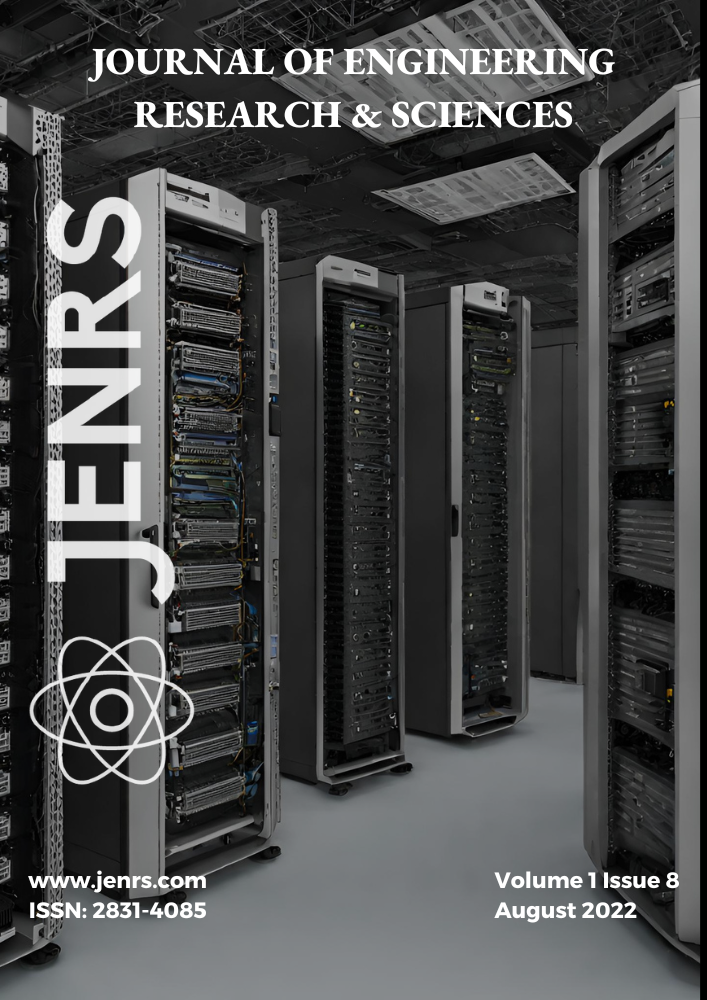
Publication Month: January 2022, Page(s): A1 – A1
Publication Month: January 2022, Page(s): B1 – B1
Publication Month: January 2022, Page(s): C1 – C1
Publication Month: January 2022, Page(s): D1 – D1
Chetan Mohanlal Wani, Sachin Ratnakar Deshmukh, Ratnakar Raghunath Ghorpade
J. Engg. Res. & Sci. 1(8), 1-11 (2022);
Biomedical engineering has become a solution for many biological problems by the application of principles and problem-solving techniques. Pacemakers, artificial bone replacements, 3-D printed organs, and dental replacements are very common examples of an application of engineering in the biomedical field. In medical applications when there is a need for bone replacement in a patient who is suffering from arthritis, the hip joint replacement cannot be avoided. The use of the artificial hip joint is going more popular and has become a need in the case of arthritis. An artificial hip implant is essential for providing initial stability at the place of failure. The comparative study in this field is limited and needs to be studied thoroughly. This paper focuses on a comparative study of hip replacement implants using SS (stainless steel) and Ti6Al4V (titanium alloy). In this study, 3-dimensional finite element analysis (using ANSYS2020) of hip replacement implant is performed by applying directional loads to detect von-mises stress amount, stress locations, and deformation in the implant. Assembly of the hip replacement implant is modeled (using Fusion 360) and static structural analysis is separately done using two different materials (SS and Ti-6Al-4V) for the femoral stem and using HDPE and HDPE/0.25MWCNT/0.15 for acetabular cup and liners respectively. Boundary conditions and loads applied are unchanged while varying parameters are the neck angle of implant and materials used. A similar static structural analysis for the elevated liner and flat liner at three different shell inclinations is done separately using the model which has shown better results. This study will help the researchers for further study on stress analysis of hip prosthesis implants.
Sergey Tarima, Zhanna Zenkova
J. Engg. Res. & Sci. 1(8), 12-18 (2022);
A product’s life cycle hinges on its sales. Product sales are determined by a combination of market demand, industrial production, logistics, supply chains, labor hours, and countless other factors. Business-specific questions about sales are often formalized into questions relating to specific quantities in sales data. Statistical estimation of these quantities of interest is crucial but restricted availability of empirical data reduces the accuracy of such estimation. For example, under certain regularity conditions the variance of maximum likelihood estimators cannot be asymptotically lower than the Cramer-Rao lower bound. The presence of additional information from external sources therefore allows the improvement of statistical estimation. Two types of additional information are considered in this work: unbiased and possibly biased. In order to incorporate these two types of additional information in statistical estimation, this manuscript minimizes mean squared error and variance. Publicly available Walmart sales data from 45 stores across 2010-2012 is used to illustrate how these statistical methods can be applied to use additional information for estimating weekly sales. The holiday effect (sales spikes during holiday weeks) adjusted for overtime trends is estimated with the use of relevant external information.
Shukhrat Egamov, Abduvali Khidirov, Mirzokulov Khotam Bakhtiyor ugli
J. Engg. Res. & Sci. 1(8), 19-26 (2022);
The results of studying the possibilities of the properties of magneto-optical qubits obtained using the Faraday rotation effect are presented. Waveguide geometries have been chosen for the design of various information processing and transmission devices based on new concepts creating key elements of logic gates, with new architectures applicable to different fields of science and industry. A mechanism for controlling magneto-optical qubits could be implemented for modeling of several magneto optical logic elements in waveguide forms, including simultaneous parallel AND, XOR and other procedures The proposed device can be used to create a wide range of information processing and transmission components founded on new strategies.
Clara Silveira, Vitor Santos, Leonilde Reis, Henrique Mamede
J. Engg. Res. & Sci. 1(8), 27-34 (2022);
Requirements Engineering is an evolving field facing new challenges. One of the central conundrums is sustainability in software. The possibility of using known creativity techniques while introducing the dimensions of sustainability to help provide unexpected, original, practical, and sustainable answers in software development is challenging and motivating. This paper proposes an approach, CRESustain, incorporating sustainability dimensions when introducing creativity techniques in the Requirements Engineering process. CRESustain uses various creativity techniques considered appropriate for the different stages of the RE process. It is inspired by the Sustainable Development Goals, creative problem-solving methods, and the Karlskrona Manifesto. The methodology applied to give materiality to the outcome of this work was Design Science Research, a research paradigm that uses knowledge to solve problems, generate new knowledge and insights, and results in an artefact. The main results indicate that the approach stimulates discussion about sustainability in technical, economic, social, human, and environmental dimensions focusing on the Sustainable Development Goals and people’s needs.
This sidebar is currently being updated and may temporarily overlap with the pages.

This work is licensed under a Creative Commons Attribution-ShareAlike 4.0 International License.